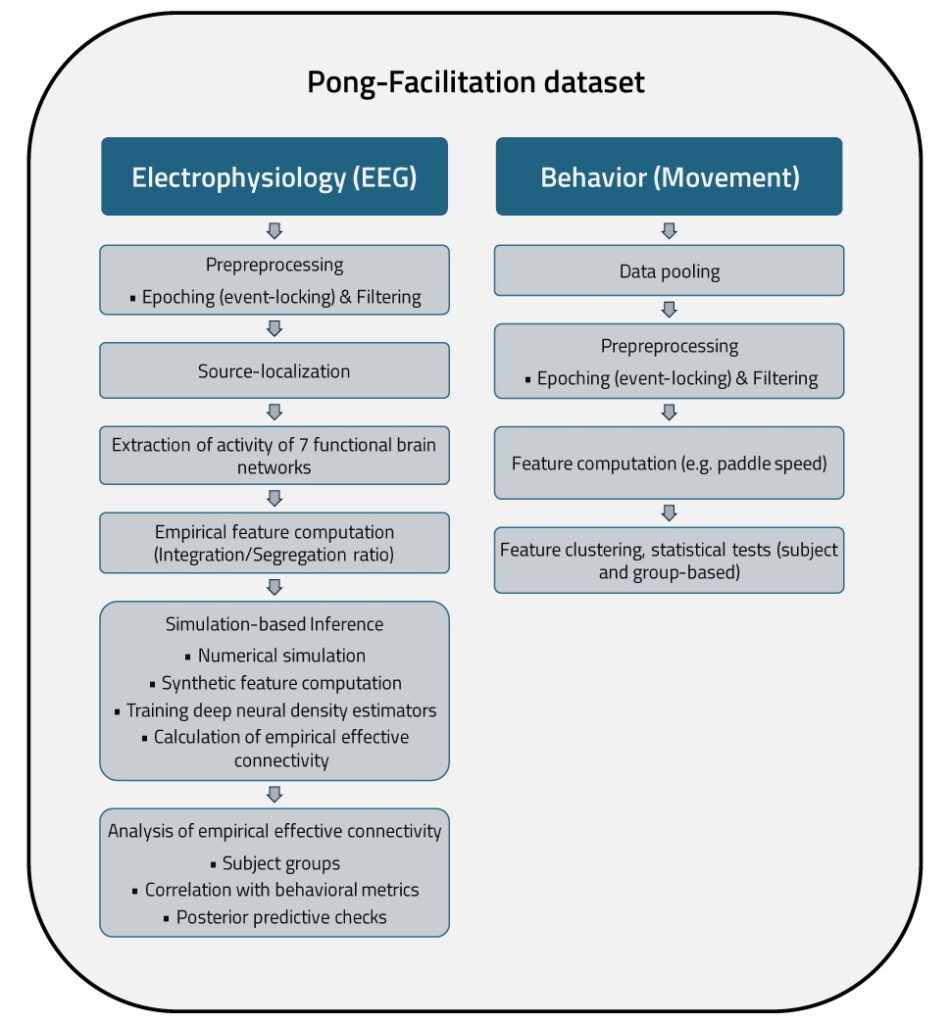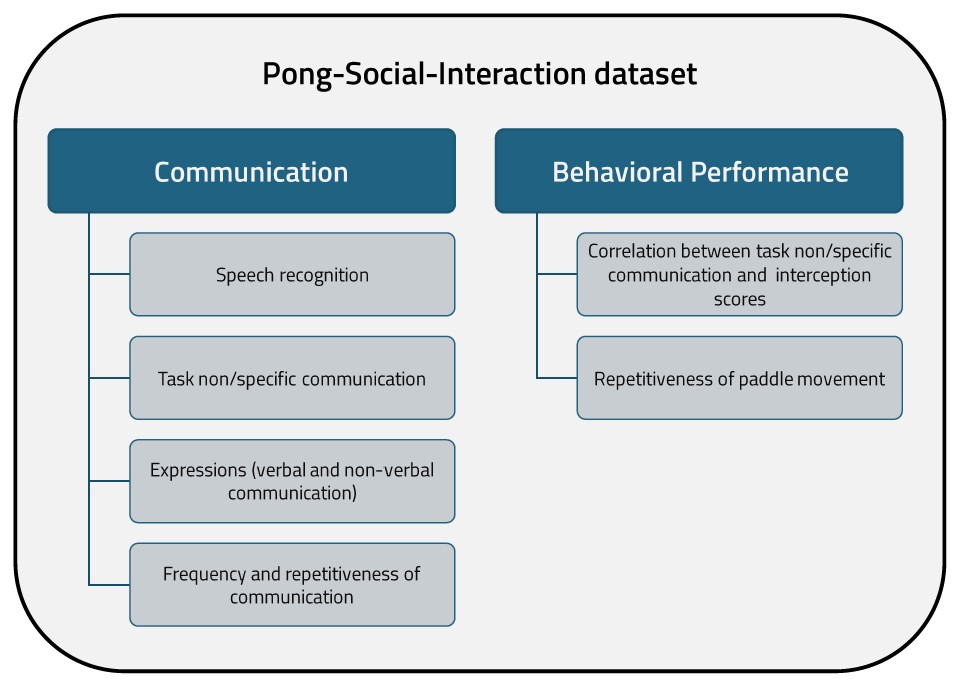Pipeline for analysing pong-ASD datasets
Authors: Amirhossein Esmaeili (AMU), Viktoria Karapetyan (UMCG)
The following REPAIRS toolbox is available under the CC-BY licence (Creative- Commons: https://creativecommons.org/). This implies that others are free to share and adapt our works under the condition that appropriate credit to the original contribution (provide the name of the REPAIRS consortium and the name the authors of the toolbox when available, and a link to the original material) is given and indicate if changes were made to the original work.
Analysis pipelines of the social, neural, and behavioral components of Pongs tasks
Pong facilitation:
Social cognition hinges first and foremost on the capacity to perceive relevant stimuli in the environment, namely social agents. Perception of social agents in the immediate environment is therefore an integral prerequiste for many forms of social interaction, from cooperation to competition, and might be potentially altered in Autism Spectrum Disorder (ASD) and Schizophrenia. However, the literature surrounding the exact neurobiological mechanism of the perception of others’ mere presence is surprisingly scant (particularly in humans). Social facilitation, namely the improvements in task performance due to others’ presence is the best proxy for investigating ‘mere’ presence effects, and is one of the principal questions in social psychology. While this phenomenon has been observed in a vast array of species on a behavioral scale, it remains largely enigmatic from a neurobiological perspective. Here, we bridge this gap by investigating how the mere presence of conspecifics modulates effective connectivity, a proxy for neural communication, across seven functional brain networks in humans.
Bayesian learning framework employed in this toolbox helps -to partially- illuminate the neurobiological underpinnings of mere presence effects, and links attentional network synchronization -mediated by changes in effective connectivity-, to behavioral modulations observed in social facilitation. In sum, this toolbox underscores the potential contribution of attentional modulation underlying social facilitation, suggests potential links to social neuropathologies, and paves the way for a deeper understanding of the intricate interplay between social context, attention, and brain dynamics
Pong-Social Interaction:
In the doubles-Pong task, two participants coordinate their actions to intercept a downward-approaching virtual ball. Each player controls a separate paddle that moves along the bottom of a shared computer screen. The goal is to intercept the ball, which descends at an angle from the top of the screen, without allowing the paddles to collide.
Targeting both researchers and therapists, the pong-social-interaction dataset aims to provide a novel approach for understanding how individuals with Autism are communicating and coordinating their actions with others. More concretely, this framework allows for analysis of between-group differences in neurotypical and neurodivergent individuals after performing the doubles-pong task. Notwithstanding the performance of participants -of either group- during the task, the unique aspect of this framework lies in the fact that patterns of paddle interactions or communications between individuals are indeed different across the two aforementioned subject groups. This framework can thus provide researchers and therapists with invaluable insights regarding motor and social coordination patterns in ASD, guide us towards a better understanding of ASD, and potentially enable the development of more socially-informed intervention routines in the rehabilitation setting.

